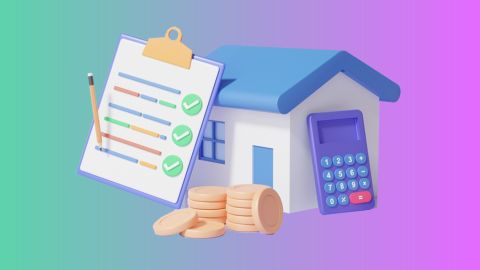Understanding the mortgage deed format is crucial when planning to take a Loan Against Property (LAP). A mortgage deed is a legal document that secures a loan against the borrower's property. It outlines the terms and conditions between the lender and borrower, ensuring a transparent agreement. Bajaj Finance offers a Loan Against Property with attractive interest rates, making it easier for you to manage your finances. Whether you are looking at fees and charges or the features of the loan, it is important to understand the mortgage deed format.
This article will guide you through the key components, steps to draft, and legal requirements, ensuring you avoid common mistakes and complete the process smoothly.
Mortgage deed format - Overview
A mortgage deed format is a standardised template used to draft a mortgage deed. This document details the property mortgaged, the loan amount, repayment terms, interest rates, and the rights and obligations of both parties involved. The format ensures that all necessary legal information is included, protecting both the lender and the borrower. By following a specific format, you can ensure that your mortgage deed is legally binding and meets all regulatory requirements.
Key components of a mortgage deed format
A mortgage deed format typically includes the following key components:
- Parties involved: Details of the lender and borrower.
- Property description: Detailed information about the mortgaged property.
- Loan amount: The principal amount of the loan.
- Interest rate: The interest rate applicable to the loan.
- Repayment terms: Schedule and terms of repayment.
- Rights and obligations: Rights and duties of both the lender and borrower.
- Legal clauses: Legal terms, conditions, and covenants.
- Signatures: Signatures of both parties and witnesses.
These components ensure that the mortgage deed is comprehensive and legally valid.
Sample mortgage deed format
| Section | Details |
| Parties involved | Lender: [Bank Name], Borrower: [Your Name] |
| Property description | [Full address and description of the property] |
| Loan amount | [Principal amount] |
| Interest rate | [Applicable interest rate] |
| Repayment terms | [Repayment schedule and terms] |
| Rights and obligations | [Rights and duties of lender and borrower] |
| Legal clauses | [Any specific legal terms and conditions] |
| Signatures | [Signatures of parties and witnesses] |
This table provides a basic structure for drafting your mortgage deed.
Steps to draft a mortgage deed format:
Drafting a mortgage deed format involves several steps:
- Identify the parties: Clearly identify the lender and borrower.
- Describe the property: Provide a detailed description of the property being mortgaged.
- State the loan amount: Clearly mention the principal loan amount.
- Specify the interest rate: Include the applicable interest rate.
- Outline repayment terms: Detail the repayment schedule and terms.
- Include legal clauses: Add any specific legal terms and conditions.
- Get signatures: Ensure signatures from both parties and witnesses.
For more detailed guidance, you can refer to this comprehensive guide on drafting a mortgage deed.
Legal requirements for a mortgage deed format
A mortgage deed must meet certain legal requirements to be valid:
- Stamp duty: Ensure that appropriate stamp duty is paid.
- Registration: Register the deed with the local sub-registrar.
- Legal clauses: Include necessary legal clauses to protect both parties.
- Witnesses: Have the document signed by witnesses.
Following these legal requirements ensures that the mortgage deed is enforceable in a court of law.
Common mistakes to avoid when drafting a mortgage deed format
Avoid these common mistakes when drafting your mortgage deed format:
- Incomplete information: Ensure that all details are complete and accurate.
- Ignoring legal clauses: Include all necessary legal clauses.
- Skipping registration: Register the deed with the local sub-registrar.
- Incorrect signatures: Ensure signatures from both parties and witnesses.
By avoiding these mistakes, you can ensure that your mortgage deed is legally valid and enforceable.
Understanding and correctly drafting a mortgage deed format is essential when securing a Loan Against Property. It ensures transparency and protects the interests of both the lender and the borrower. Bajaj Finance offers comprehensive Loan Against Property solutions, making the process smooth and hassle-free. Whether you need information on eligibility and documents for loan against property or want to know how to apply for loan against property, Bajaj Finance has you covered. With the right knowledge and careful drafting, you can ensure that your mortgage deed is legally sound and protects your financial interests.




